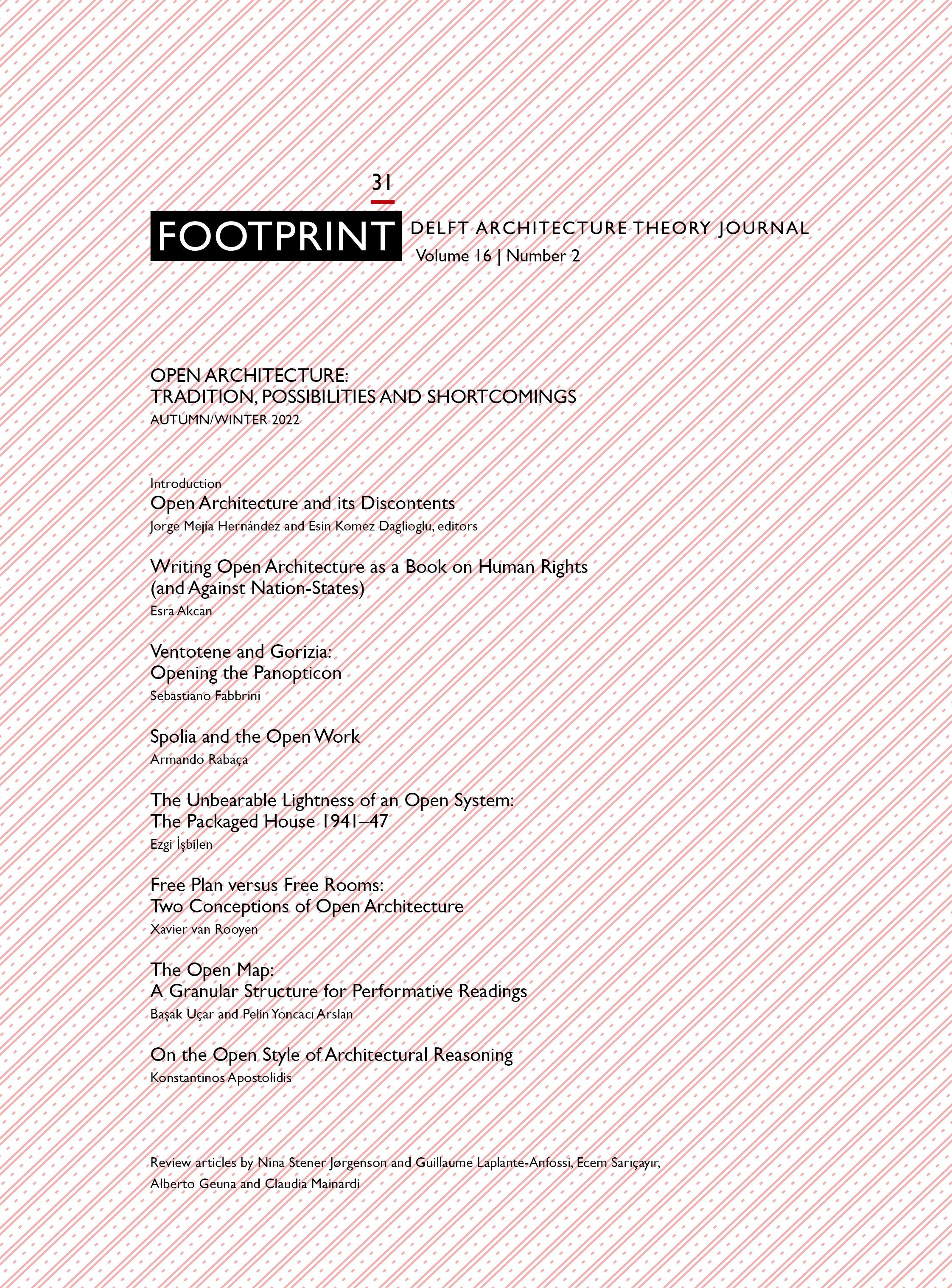Architect of Nothingness
Frank van Klingeren’s Open Architecture
DOI:
https://doi.org/10.7480/footprint.16.2.6078Abstract
Architect Frank van Klingeren was most active during the 1960s and 1970s in the Netherlands. In response to the social and urban challenges of the time, Van Klingeren developed various experimental architectural forms and concepts. This essay discusses his comparatively well-known community centres De Meerpaal and Het Karregat by focusing on his commitment to unfinished architecture, open plan through wall-less designs, and his insistent attempt at creating social encounters through these spatial principles. To provide historical contextualisation of these architectural principles I engage with a theoretical framework developed by Esra Akcan which provides the first full-fledged conceptualisation of open architecture. I look at archival materials such as Van Klingeren’s poems, essays, and interviews as well as the designs of his community centres and their reception in national and international journals and newspapers. In addition to extending our knowledge of Van Klingeren’s seldom studied architectural practice, this essay aims to contribute to the concept of openness in architectural studies with the case of Van Klingeren’s spatial practice.
References
Akcan, Esra. Open Architecture: Migration, Citizenship, and the Urban Renewal of Berlin-Kreuzberg by IBA 1984/87. Basel: Birkhauser, 2018.
Bouw Architecture Journal 52, s-Gravenhage: Stichting Bouw, 1973.
Hughes-Santon, Corin. “Closed Environment for Living Space,” Design 241 (1969): 40-49.
Komrij, Gerrit. Het Boze Oog. Singel Uitgeverij, 1991.
Pawley, Martin. ‘Agora’, Architectural Design 6, 39 (1969): 358-362.
Peters, Edie. ‘Karregat-proef Teruggedraaid’, De Volkskrant, April 14, 1981.
Ruyter, Martin. ‘Het Karregat is een Gevaarlijk Gebouw,’ De Volkskrant, March 9, 1974.
Ruyter, Martin. ‘Een Gebouw dat Uitnodigt tot Onrust’, De Volkskrant, January 15, 1977.
Van den Bergen, Marina and Vollaard, Piet. Hinder en Ontklontering: Architectuur en Maatschappij in het Werk van Frank van Klingeren. Rotterdam: Uitgeverij 010, 2003.
Van den Ende, Piet. ‘De Magische Doos van Van Klingeren’, Het Parool, November 7, 1967.
Van Klingeren, Frank. ‘De Sleutels van Mijn Tante’, Bouw 37 (1982): 13.
Van Klingeren, Frank. Architecture, Formes + Fonctions, 16 (1971).
Downloads
Published
Issue
Section
License
Copyright (c) 2023 Ecem Sarıçayır

This work is licensed under a Creative Commons Attribution 4.0 International License.
- Authors retain copyright and grant the journal right of first publication with the work simultaneously licensed under a Creative Commons Attribution License that allows others to share the work with an acknowledgement of the work's authorship and initial publication in this journal.
- Authors are able to enter into separate, additional contractual arrangements for the non-exclusive distribution of the journal's published version of the work (e.g., post it to an institutional repository or publish it in a book), with an acknowledgement of its initial publication in this journal.





